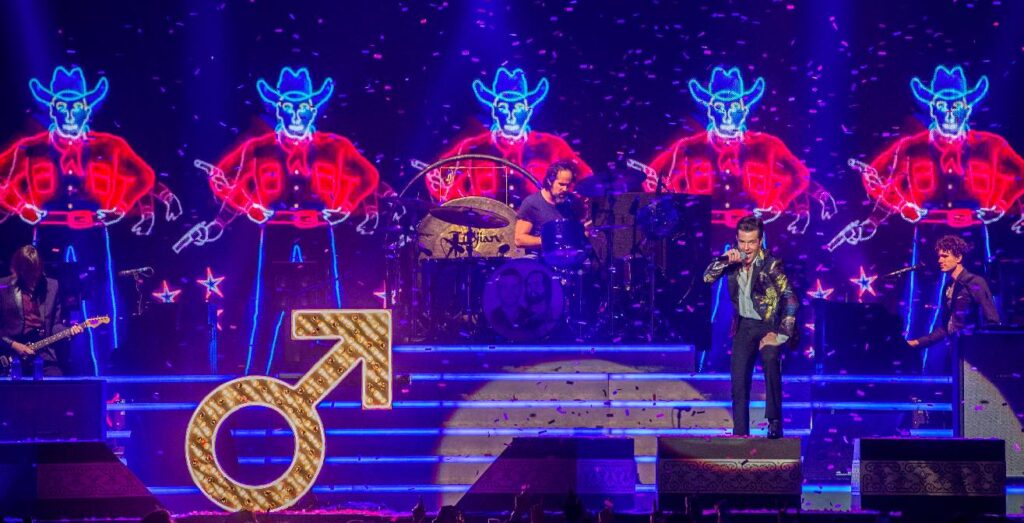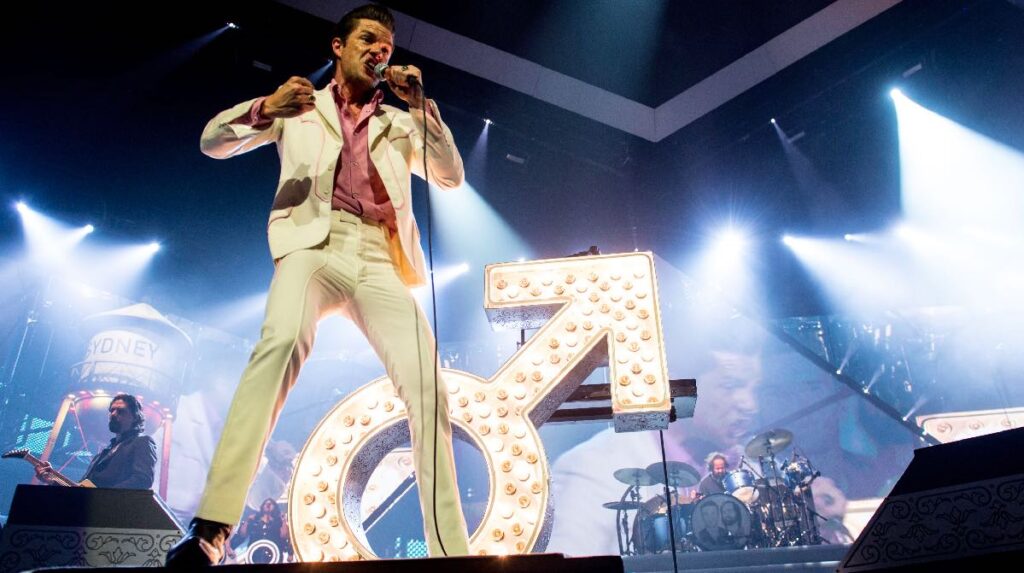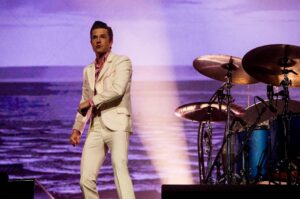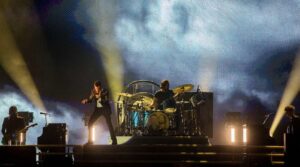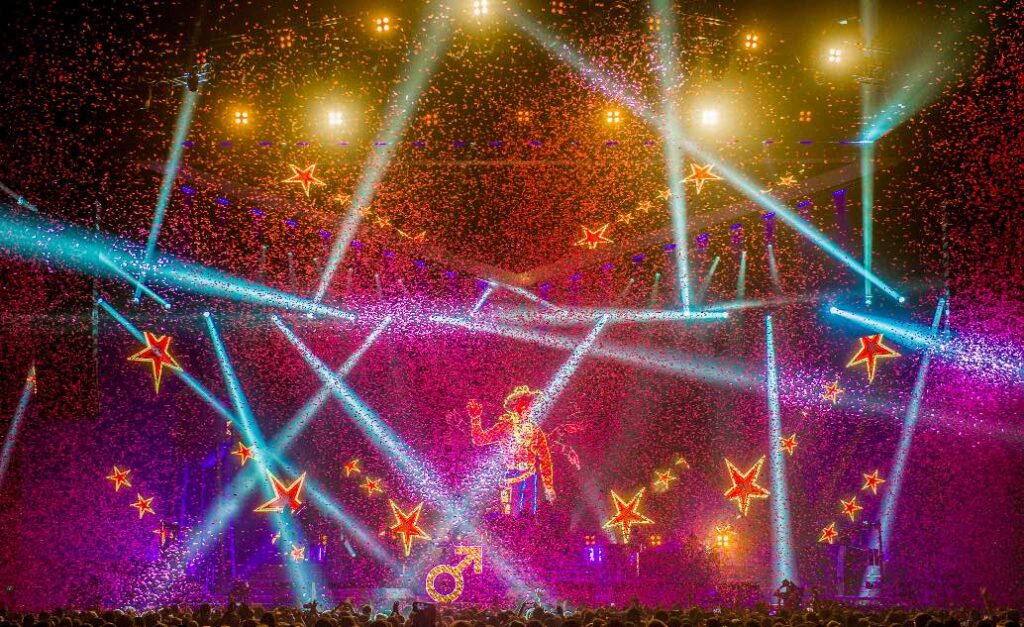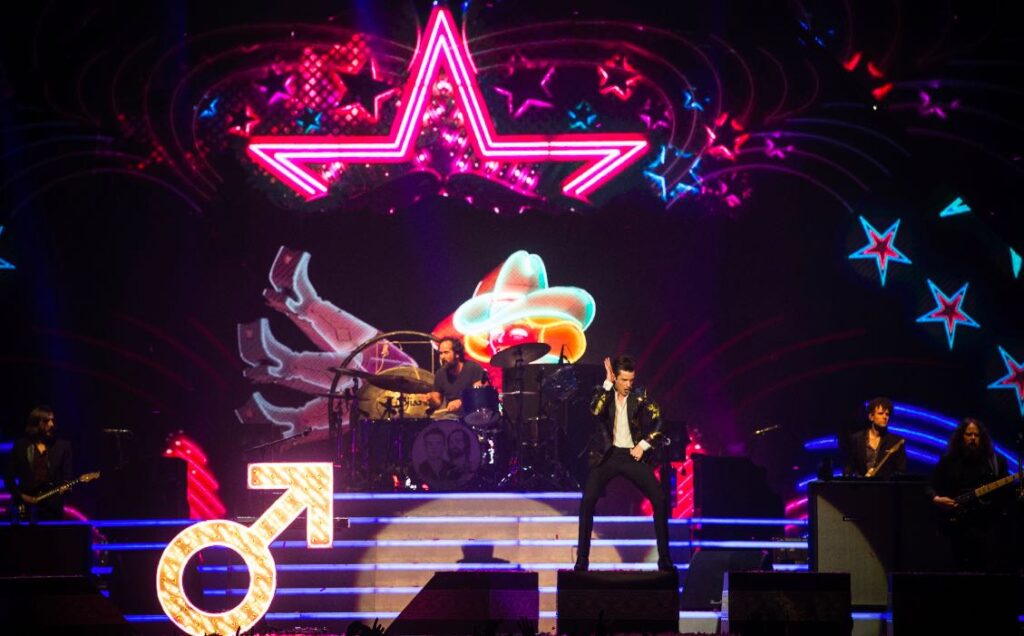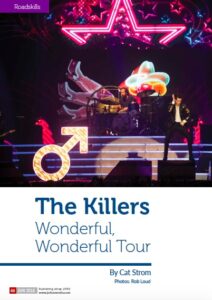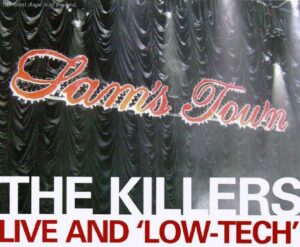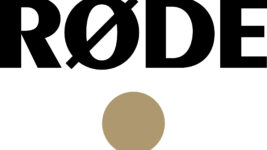News
12 Jun 2018
The Killers Wonderful, Wonderful Tour
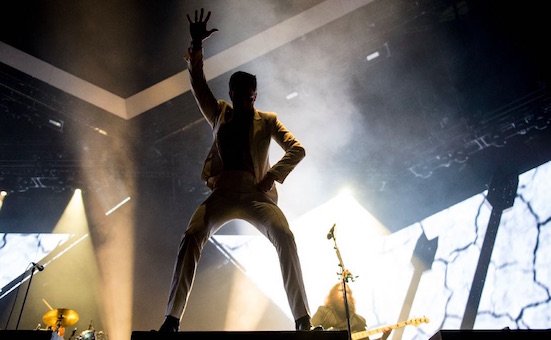
Subscribe to CX E-News
ROADSKILLS
The Killers Wonderful, Wonderful Tour
By Cat Strom.
Photos: Rob Loud
Almost 15 years on from their debut, The Killers are as big now as they’ve ever been and along with pristine production values, they are one of the most exciting live acts on the planet.
Thirteen years ago Steven Douglas was asked to fill in for the house tech at a venue in his native Dublin. It was some band from Las Vegas he’d never heard of and he busked the house rig. The band said they loved what he did and asked for his phone number. Steven never expected to hear from them again, but he did, and that is how he came to work with The Killers.
Several concert tours later Steven is at the helm of a grandMA2 for a lighting and video spectacular that is the Wonderful, Wonderful Tour. This time around, it was decided to bring in Fireplay, led by Nick Whitehouse who Steven often works alongside, to collaborate on the set design and video content. “We needed an extra set of hands on deck and having worked with Josh Zangen of Fireplay before, I knew he was the right person,” commented Steven. “We all work so well together and there’s no ego clash.”
The video is much grander and larger than ever before with the set backed by a wraparound, forced perspective panoramic LED screen. This large upstage video wall is made up of a ROE 12mm LED screen whilst ROE 8mm product makes up a pyramid shaped screen, placed in front on the upstage wall.
Added to that is a third automated triangle screen on Kinesys motors, affectionately referred to as the ‘Flying-V’ by the crew. These video screens travel with custom built frames so they don’t require a fascia to hide the square lines on the sides. Set elements include a six metre water tower and giant arrows; the glitz of Vegas is represented by neon and lightbulbs juxtaposing with the water tower of small town America.
“When Josh showed me the first sketch I was rather skeptical about the water tower and then every window I looked out of after that in America, I could see a water tower,” said Steven. “They always have the town name on them so we do the same, changing it to every city we play in.”
The rig is slightly different in Australia due to fixture availability and shipping constraints. Most noticeably the absence of the custom made rectangular and square lighting pods lined with GLP X4 Bar 20s. The shipping schedule from Mexico became too much and so it was decided to ship the automated triangular screen and use local lighting.
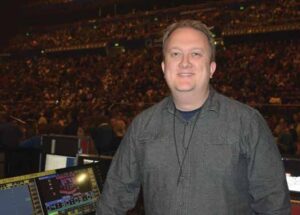
Steven Douglas
The flown screen is outlined with GLP X4 Bar 20s, as is the pyramid, cutting through the lighting and video effectively. The X4 Bar 20s are particularly effective on the upstage triangle when they cross over at 45 degrees to create a triangular light curtain. “I knew I didn’t want a lot of wash lights as there would be so much ambient light coming off the video, and although the GLP X4 Bar 20s do that a bit, we primarily use them as a light curtain effect,” explained Steven.
“I knew I needed high-power spot and beam fixtures so I went with the Claypaky Scenius Unico and Martin Axiom Hybrids – however here I have had to substitute them with Claypaky Mythos and Scenius Profiles for key lighting. The flat beam on the Unico is what really attracted me to the fixture, it’s a very pure white light once you put the beam flattener into it but you can still zoom it down to get an almost beam effect without having to go into a beam mode.”
When Steven has his Claypaky Scenius Unico fixtures they are usually used in conjunction with a Follow-Me automated spotlight system that is rented from Neg Earth in the U.K. There are three roaming musicians downstage, and each gets a dedicated spot operator positioned back by the dimmers that follows them with a mouse while viewing an overhead camera.
In Australia Steven also has twenty-seven GLP JDC1 strobes with six of them downstage left and right side lighting the band, some more on the front truss and a couple overhead.
“All the ones on the floor are able to envelop the band in ambient wash,” he said.
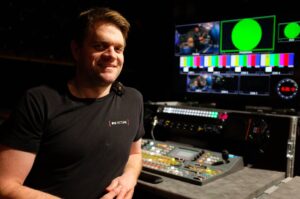
Big Picture’s David Horscroft
“It’s great that the strobe feature cuts through, and then you can still strobe the actual wash fixture as well. They were a little funky getting my head around first time programming but I got it together pretty good.”
Claypaky Sharpy washes are mounted on the front truss to wash the stage, and 4-Lite moles are used in abundance to light the crowd. Martin Viper Performances are all around for main spot fixture. Lightwave International supplied the lasers including seven 35 watt full-coloured DMX lasers upstage and 1 Phenom moving head lasers, which also utilised the Follow-Me system in the US and UK.
Production manager for The Killers is Australian Michael Oberg, who the band pinched from Frontier Touring a few years back. It was Michael who suggested Sydney-based Big Picture as the video vendors for the entire world tour.
Big Picture’s David Horscroft is out on the road as video director saying that he has found in the past that people tend to choose Big Picture because they know the company will put their best resources and their best people on the tour. David runs the Sony HXC-300R broadcast cameras with his Grass Valley Kayak switcher, whilst disguise 2x4pro (one active, one understudy) media servers run all of the video content.
The disguise media servers sit backstage with David but are controlled by Steven at FOH who likes to cue all the content from the MA2. 2x4pro media sever maps the dynamic set and facilitate Notch real-time generative effects. All the feeds come through to the designer with Notch FX already treating the image. This is managed backstage by the disguise operator, Dan Gentile who says, “A number of the disguise features were seen as advantageous to the show.
“It’s mapping features have definitely been a huge advantage, as are its ability to change surfaces, as we bounce between our own show with a complete rig and festival setting shows, and coming ready to run Notch blocks.”
David added that the disguise servers are running flat out, as even when running camera images through them, they are using Notch effects. The screens display custom content designed in collaboration between the band, Fireplay and Steven. The content was then produced for the screens by Blink TV and Moment Factory. Overall the resolution is around 2,500 pixels wide by 1,100 pixels high with over 1,000GB of content.
This article first appeared in the print edition of CX Magazine June 2018, pp.46-51. CX Magazine is Australia and New Zealand’s only publication dedicated to entertainment technology news and issues. Read all editions for free or search our archive www.cxnetwork.com.au
More reading: The Killers – CX Magazine July 2008
Subscribe
Published monthly since 1991, our famous AV industry magazine is free for download or pay for print. Subscribers also receive CX News, our free weekly email with the latest industry news and jobs.

